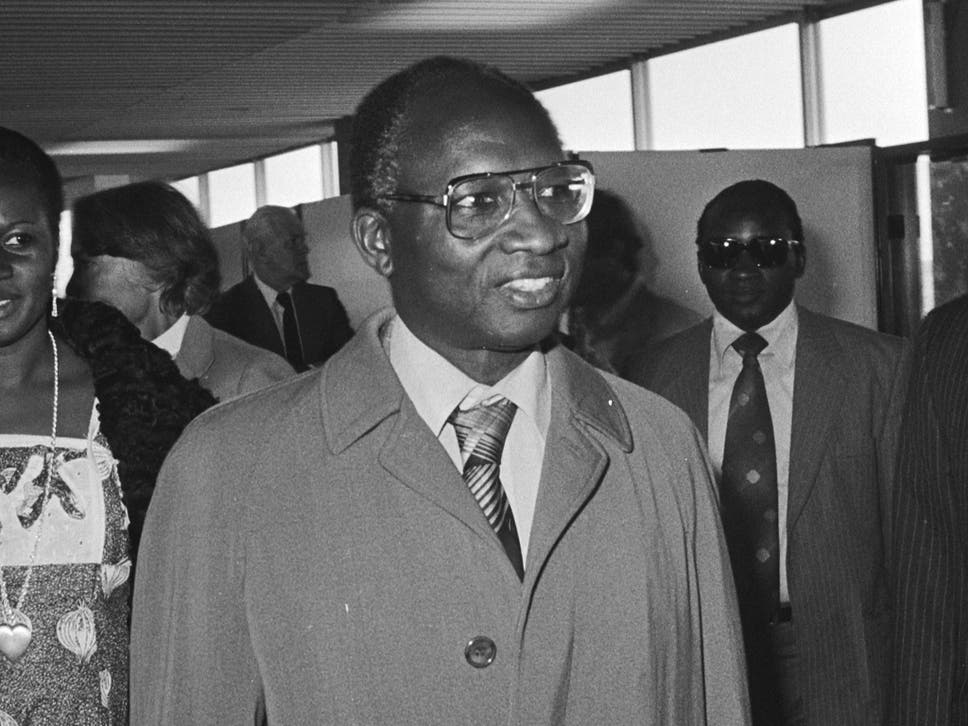By Musa Sanneh
A people tired of death, suffering and other forms of indignities perpetrated against them by European powers greeted the end of colonialism with tears and joy. The true cost of colonialism on the African continent, in terms of lives lost and resources plundered, will never be known. It’s crystal clear that during its accentuation spanning over 150 years, the death, suffering and indignities European colonialism left in its wake on the African continent were matched only by its antecedent European Slave Trade. But slavery and colonialism were not the only sins that contaminated the soils of Africa. The end of colonialism witnessed the intensification of power struggle, the Cold War, between the world’s two greatest powers. The Western European countries were led by the United States and Eastern European countries were unified under the now defunct Union of Soviet Socialist Republics (USSR). The events that provoked the power struggle were complex and sometimes conflicting. However, it is generally true to say that the competing “economic and political interest” coupled with power vacuum that resulted from the collapsed of pre-World War II balance of power structure played a considerable role. Consequently, until the bipolar structure itself utterly tumbled in 1992, the world “politics and economics” were bifurcated between the competing ideologies of the (USSR) and the United States.
The ideology of the Soviet Union started with Leninism that largely adulterated Marxist’s doctrine of the dictatorship of the proletariat. In the Soviet Union, however, decisionmaking was exclusively the function of the bureaucratic elites largely alienating the proletariat. It is a doctrine that opposes the concentration of capital and other factors of production in the hands of the capitalists (monopolists) in favor of their possession by the proletarian masses (collectivism) who constitute the “dispossessed peasants and the petty bourgeoisie.” United States, on the other hand, was a modern liberal nation with capitalism as its primary economic principle and democracy as its governance instrument. These differences of ideologies and economic systems were the sources of the conflicts between the two leading powers.
Threatened by the perceived Soviet ideological imperialism fortified by formidable conventional armed forces with atomic bombs, developed in August 1949, the United States adopted a doctrine of “containment” to scuttle Soviet expansionism. The “doctrine of containment” altered the United States prewar doctrine of “isolationism to a postwar globalism.” With this new posture, Unite States sought to rally the world — diplomatically, militarily, and economically — against the Soviet Union. The North Atlantic Treaty Organization (NATO) was created, in 1949, in that global efforts. But determined to defend her political, economic, and military interest, USSR in 1955 responded with a geopolitical pact of her own called the Warsaw Treaty Organization or simply known as the (Warsaw Pact). The rest is now history.
It’s important to note, however, that the cloud that formed over the skies of United States and USSR did not dissipate into the atmospheres of these major powers and their client states, but had extended a specter over far-flung developing countries in Africa and Asia. To extend their power, influence, and economic systems in Africa, the two superpowers transferred millions of dollars in cash, technical support, and military weapons to newly independent states and liberation movements in territories fighting for their country’s independence.
Consequently, with the exception of perhaps very few leaders, a group of Leninist/Marxist ideologues and a movement of their younger generations across the African continent, who would later become their intellectual descendants, began to theorize economic models that borders on a slew of different socialist economic strands. The primary driver for most of these leaders and their protégés were more about their affinity for Leninist/Marxist theories than the operational realities of their own countries. In other words, the economic policies they espoused mirrored their perception of the governance style in the Soviet Union—(politics) rather than the practical realities of their individual countries—(economics). Thus, as was the case with Nyerere’s “Ujama” in Tanzania, Cabral’s last-ditch efforts to “destroy the economy of the enemy and build our own” in Bissau Guinea also failed to stand the test of time.
By design or divine intervention, The Gambia under Sir Dawda Kairaba Jawara made a strategic decision not to tilt too far towards on either side in the superpowers struggle. It was this exuberant embrace of restraint and realism that firmly put The Gambia on a solid economic and democratic foundation compared to other countries in Africa.

On the Democratic front, Jawara rejected the notion that multi-party democracy is at variance with the traditional governance philosophy of Africa. He insisted that for The Gambia to leap forward as a prosperous country her foundation must be rooted in democracy, rule of law and respect for human rights crowned with unfettered religious liberty. Citizens, Sir Dawda argued, should be allowed to freely express their opinions, and to join political parties of their choices. Political parties, he maintained, should be free to put their policies and programs before the people without unreasonable encumbrances from the government. State power, Sir Dawda submitted, must be derived from the free will of the people through elections in which their interest will be served in a delegated representative system. This political and economic philosophy led not only to a strong democratic and vibrant economic foundation but had also led to an economic expansion. Some of the key performance indicators of this prosperity should be historically contextualized so that The Gambia could make informed-economic decisions to move forward into the future.
For instance, during the first decade after independence, (between 1965 and 1976) the following were the “Basic Economic and Agricultural Data” of The Gambia:
| Real GDP per Capita (% per annum) | 2.3 |
| Growth in Agriculture (% per annum) | 2.6 |
| Agricultural output (% of GDP) | 37.8 |
| Government recurrent expenditure (% of GDP) | 13.6 |
| Government budget deficit (% of GDP) | 2.6 |
| Development expenditure (% of GDP) | 3.9 |
| Food imports (% of GDP) | 7.1 |
| Balance of payment current account deficit (% of GDP) | 8.3 |
| Groundnut sales (1000 metric tons per annum) | 122.9 |
| Average groundnut price per tonne (1976-1977 US$) | 556 |
| GPMB’s reserves (annual change, millions of Dalasis) | 7.8 |
| Groundnut producer price (current US$) | 105 |
As indicated in the data above, during the first ten years after independence, agriculture grew at a rate of 2.6 percent per annum. A 2.6 percent annual growth rate was significant for several reasons. First, it should be recalled that in the first ten years after independence, The Gambia’s population growth rate was also 2.6 percent. This means that as a country emerging from the ashes of colonialism, The Gambia was not only producing enough food to feed its growing population, but it also had eliminated the imbalance between consumption and production. Evidently, food insecurity was not one of the country’s problems.
Second, during the same period, the annual growth rate of The Gambia’s total gross domestic products (GDP) — the market value of all the goods and services produced in the economy — was 4.9 percent. Now, as it could be deduced from the above data, a 2.6 percent annual growth rate in agriculture alone accounts for more than half of the annual growth rate of total GDP. Again, this tells us that the economy was doing well, in large part, because of agriculture. And clearly, where that was the case, as a country at the time, The Gambia’s potentials far exceeded just putting food on the proverbial national-dinner table. Furthermore, through efficient resource management The Gambia had the capacity to power food-processing industries producing other positive spillover effects. For example, in 1975, exports of groundnuts and its byproducts of oil and cake alone reached a high of US$49 million
Finally, powered by high volume of groundnut sales which averaged about 123,000 tons annually, agriculture contributed about 38 percent to our GDP per annum during the first decade after independence. This combined with favorable world market price the balance of payment account was positively impacted. In fact, during this period, the current account deficit which averages about 8.3 percent of the GDP was adequately covered by capital inflow into the country. Consequently, by 1975, The Gambia had accumulated adequate external reserves equivalent to cover ten months imports of goods and services.
In the quest to expand economic prosperity and to the diversify the economy from heavily dependent on agriculture, the government accelerated the creation of public enterprises (parastatals or state-owned enterprises) to produce goods, make credit available and supply services for both “social and economic purposes.” While at independence in 1965 The Gambia had only four state-owned enterprises, by 1985 the number of state-owned enterprises increased to twenty—by a whopping 80 percent.
Notwithstanding the above robust macro-economic performance of the country, by the sunset of the second decade (1976 to 1986), The Gambia’s economic fortunes had colossally unraveled. Agricultural output per capita eviscerated to an annual rate of 1.2 percent, its contribution to GDP declined by more than 24 percent, averaging 29 percent for the whole of the second decade. Rural poverty consequently increased. Lower groundnut harvests due mainly to Sahelian drought compounded by a collapse in world market prices for agricultural commodities worsened the balance of payment account. These dire economic conditions led to the foreign exchange reserves plummeting to cover the equivalent of only one week worth of imports of goods and services. In response to these adverse economic conditions, The Gambia embarked on a comprehensive austerity program — the Economic Recovery Program (ERP)— to recover its economy.
Therefore, the questions that needed to be asked going into the analyses of the audit of the seven state-owned enterprises by Ernst & young are: what activities and decisions warranted The Gambia to initiate the ERP; did state-owned enterprises served the purpose for which they were created; have they succeeded or failed in delivering the primary purposes they were created; should state-owned enterprises be the engine to power future economic growth; given the knowledge, skillsets and experiences with state-owned enterprises, should The Gambia create more or divest its current state-owned enterprises; is The Gambia better-off deploying these knowledge and experiences to reform and repurpose the current state-owned enterprises, or should it leave the current state-owned enterprises to collapse to allow the private sector to provide the needed goods and services in the marketplace?

